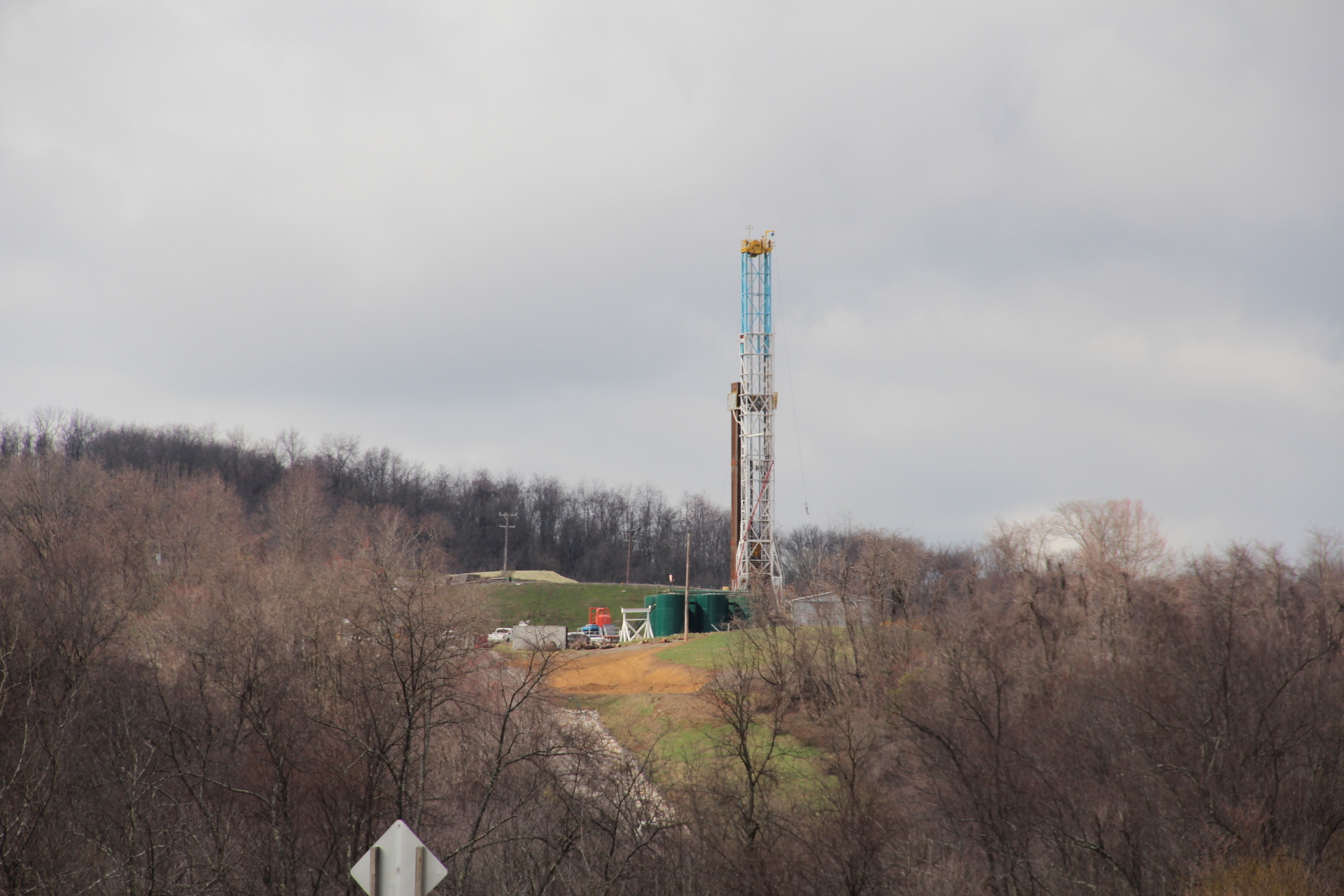Air pollution from the natural gas industry was up in 2014—driven in large part by a growing industry. According to new data released by the Pennsylvania Department of Environmental Protection (DEP), emissions were up in almost every major category, though some pollutants saw higher increases than others.
The numbers take into account emissions from a variety of sources, including the wellheads themselves, transmissions lines and gas compressor stations—the large facilities that clean up and pressurize gas to ship to end users.
In 2014, the state’s natural gas industry expanded production to 4.1 trillion cubic feet, a 32 percent increase from 2013. In addition, there were more midstream natural gas facilities reporting their emissions to the DEP.
“The reason we’re seeing an increase in emissions is because production in this industry is increasing,” says Neil Shader, a spokesman for the DEP.
Because of this increase in production, there were also more engines running pumps, dehydrators and compressors at various production and processing facilities. Emissions from these types of sources can come from leaks in equipment or pipes, and from combustion of fuels used to power equipment.
The emissions that saw the biggest spikes were sulfur dioxide (SO2), which increased 40 percent from 2013; and volatile organic compounds (VOCs), which saw a 25 percent jump. Each of these can be harmful to human health by themselves, but also contribute to the formation of other serious pollutants. Sulfur dioxide emissions can form particulate matter, which is associated with heart attacks and lung diseases. And VOCs are a crucial ingredient in the formation of ozone, which can exacerbate asthma and other lung problems.
Even as emissions from the gas industry increased, the state saw a decrease in other areas—mainly from the coal-fired power industry. The increase in sulfur dioxide emissions in the gas industry, for example, was dwarfed by emission decreases in the electric generating sector in Pennsylvania. According to the DEP, sulfur dioxide emissions in Pennsylvania’s utility sector have dropped by 55,000 tons, or 17 percent since 2011. By contrast, shale gas sulfur dioxide emissions only increased by 141 tons, to 263 tons, over that times span.
As for VOCs, the numbers indicated a rising share coming from the drilling industry, which accounted for about 20 percent of the state’s industrial VOC emissions in 2014.
Even as emissions from the gas industry increased, the state saw a decrease in other areas. The increase in sulfur dioxide emissions in the gas industry, for example, was dwarfed by emission decreases in the electric generating sector in Pennsylvania. According to DEP, sulfur dioxide emissions in that sector have dropped nearly 18 percent since 2011.
One area where emissions actually went down: methane. Between 2012 and 2014, emissions from methane, which is the main component of natural gas, decreased by 12 percent. DEP says one reason is that companies have become more aware of the environmental and economic consequences of methane escaping into the atmosphere.
“Industry is getting much better about fixing and identifying leaks and really keeping that product—what they’re trying to sell—in those pipes and getting it to market,” Shader says.
But there’s another potential reason for the drop—regulation.
In 2012, the EPA created new rules aimed largely at curtailing the release of methane and other gases from well completion, the end-stage in the drilling process. By 2014, methane emissions from well completions in Pennsylvania dropped by 94 percent, from 40,000 tons in 2012 to just 2,200 tons in 2014.
“What we see in the numbers is that regulations work,” says Rob Altenburg, an energy policy analyst with the environmental group PennFuture. “Where there’s a regulation in place, emissions go down.”
But the Marcellus Shale Coalition drew a different conclusion. The drilling industry’s top trade group in Pennsylvania says the industry is doing fine with current regulations, and that new regulations, like the Wolf administration’s plans to further cut methane emissions, are unnecessary.
“This positive and shared environmental progress further underscores the fact that additional, burdensome regulations are unnecessary, as Pennsylvania’s natural gas operators are focused on working with regulators and stakeholders alike to protect and enhance our environment,” Marcellus Shale Coalition president David Spigelmyer said in a statement.
But beyond the debate over regulation, one larger question looms over all these numbers: How accurate are they, anyway? That’s because they are based mostly on calculations created by the EPA for how much pollution a given piece of equipment might produce. As such, the calculations don’t take into account leaks or faulty equipment. In fact, the uncertainty around them prompted former DEP secretary John Quigley to say earlier this year that the actual emissions were unknown and that the industry’s “actual emissions are higher” than what gets reported to the agency.
AUG. 26, 2016 1:35 P.M. THIS STORY HAS BEEN UPDATED.



